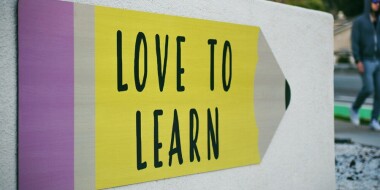When it comes to discussing social issues, like Blood Donations, some teachers find it quite hard as they worry the students might find such topics boring and not appealing. We’ve created this set of lesson ideas aiming to make the lesson about International Blood Donor’s day really fascinating and inspiring with the main focus on creative social campaigns and advertising, so that it may well be appropriate for those students interested in marketing and advertising.
Ideas for presenting the topic:
As a lead-in to the topic read some facts about blood donations.
- One in seven patients entering a hospital will need blood.
- Every 2 seconds someone in the US needs blood.
- A pint of blood (Grande Starbucks coffee) can save up to 3 lives.
- Less than 10 % of people donate blood annually.
- Only 37 % of the population are eligible to donate blood.
- One car accident victim might need as many as 100 pints of blood.
- The average blood donor gives twice a year. If all blood donors gave 3 times a year, blood shortages would be a rare event.
- Swedish donors first receive a ‘thank you’ card when they initially donate blood, they also receive a text whenever their blood is used to help someone.
Source: https://www.pinterest.ru/
Ask the students the following questions:
- Which of these facts are new for you?
- Which of these facts do you find:
- most surprising?
- disappointing?
- encouraging?
- shocking?
Another good option for a lead-in is to discuss the Blood Donations slogans, for example from this site and choose the most inspiring/ touching/ thought-provoking/catchy.
5 Social Campaigns Around the World (reading and listening activities)
To discuss the topic, you can find short videos about different social campaigns. Here’s the social commercial featuring Ronaldo and more information about the campaign in this video, here’s more information about the Ink and Blood campaign and about the Kind Heart campaign. You can do either reading (there are descriptions of the campaigns) or listening activities (through watching videos) with these materials
Below you can find some descriptions of social campaigns from different countries and the possible tasks for reading/listening.
Be the 1
Description
The Portuguese player has become an ambassador of the regional blood donation centre in the eastern Polish city of Białystok and advocates blood donation as a part of “BE THE 1” campaign which promotes the donation of blood and plasma.
The regional blood donation centre posted a video featuring Cristiano Ronaldo on their social media profile.
Ronaldo goes on to say, «Right now, near you, someone needs blood. Not just any blood, a perfect match. That’s why I donate.» Ronaldo has been regularly donating blood since the age of 24.
Source: https://polandin.com/38383368/be-the-1-cristiano-ronaldo-patron-of-bialystok-blood-donors
Ink and blood
Description
Due to health reasons, the Red Cross international regulations indicate that people who get a tattoo must wait a year before donating blood. Ecuador has a low blood donation level which decreases further every day. On the other hand, over 100.000 tattoos were inked last year and the number keeps rising.
We decided to offer the tattoo community the opportunity to donate blood before they got their next tattoo, so we launched Ink and Blood, a campaign sponsored by the Ecuadorian Red Cross to increase blood donations.
The most influential tattoo artists joined the cause and shared the initiative with their communities. The campaign has helped increase blood donations by over a 3.600%, has changed the perspective of donating blood in the tattoo community of Ecuador and has interested other Red Cross chapters worldwide.
Source: https://www.adsoftheworld.com/media/experiential/ecuadorian_red_cross_ink_and_blood
Kind-heart
Description
Due to alcohol consumption, car accidents have risen during Carnaval in Rio de Janeiro, Brazil, such as the need for blood transfusions. Antarctica is a beer best known in Brazil as BOA. Three letters that also represent all the blood types. So we created a pop-up blood donation center where in exchange, the volunteers received a free transport pass for the last 7 days of fun.
Experiential advertisement created by BFerraz, Brazil for Antarctica Beer
Source: https://www.adsoftheworld.com/media/experiential/antarctica_beer_boa_kindhearted_rio
Virtual Donor
Description
The NHS is using virtual reality to encourage more people to donate blood.
Smartphone technology — being used in a volunteering drive in Birmingham and London — detects a hi-tech sticker on a prospective donor’s arm. The «donor» can then see their virtual blood fill up a bag connected to a patient. While the «recipient» only appears on a digital screen, they have been real-life patients who depended on transfusions.
NHS Blood and Transplant says it hopes the campaign encourages more people to become donors for real.
Source: https://www.bbc.com/news/av/uk-england-birmingham-36336918
Red puddles
Description
In the centre of St. Petersburg, surrounded by historical monuments and tourist attractions, unusual art objects appeared — red puddles with messages in Russian and English about the importance of donating blood regularly. In this way, bloody puddles remind saint-petersburgers that in the summer most of the donors leave the city for vacations and hospitals especially need donor blood.
Advertisement created by Decembrist, Russia for Fonddonorov.
Source: https://www.adsoftheworld.com/media/ambient/fonddonorov_bloody_puddles
Task 1
Read/watch and match the countries with the name of the campaign.

Keys: a -3, b- 5, c -2, d-4, e-1
Task 2
Read/watch and mark the statements true/ false/ not stated
- Ronaldo has been a regular blood donor since he was 24.
- Ronaldo has never got a tattoo.
- There were a lot of people who donated blood in Ecuador before the campaign started.
- The number of people who get a tattoo is increasing in Ecuador.
- The number of car accidents during Carnival in Rio decreases.
- Blood donors in Rio received a free transport pass for a month.
- Virtual blood donors could see real-life patients on a digital screen.
- A lot of virtual blood donors became donors for real.
- People donate more blood in the summer.
- People donate more blood when it’s rainy.
Keys: 1- T, 2- NS (but true), 3-F, 4-T, 5-F, 6- F, 7- T, 8- NS, 9-F, 10- NS (but false)
It might be useful to work with language about blood donations or campaigns and do some vocabulary work based on the texts. Offer the students to match the phrases:

Keys: 1 — d, 2-c, 3-e, 4-b, 5-a
Discussion
After reading or watching it can be engaging to have a discussion. Here’re some possible questions to consider:
- Which of these campaigns do you suppose to be most / least expensive?
- Which of them do you find/least most effective?
- Which of them would you like to launch in your country/ city?
Project work (optional)
Do you have your own idea of a campaign in your city/country? Share/Work in pairs/ groups and create your own blood donation campaign. Share with the class, remember to use new words from the texts/ videos.
Ideas for homework
- Watch the videos of the given campaigns at home and share more details with the class that are not in the texts.
- Find more information following the hashtags #inkandblood, #kindheartedrio, #bethe1
- Watch or read about more campaigns, here’s a link.






 Олеся Яресько
Олеся Яресько 
 Диляра Биктагирова
Диляра Биктагирова 

 Маргарита Аветисян
Маргарита Аветисян 
